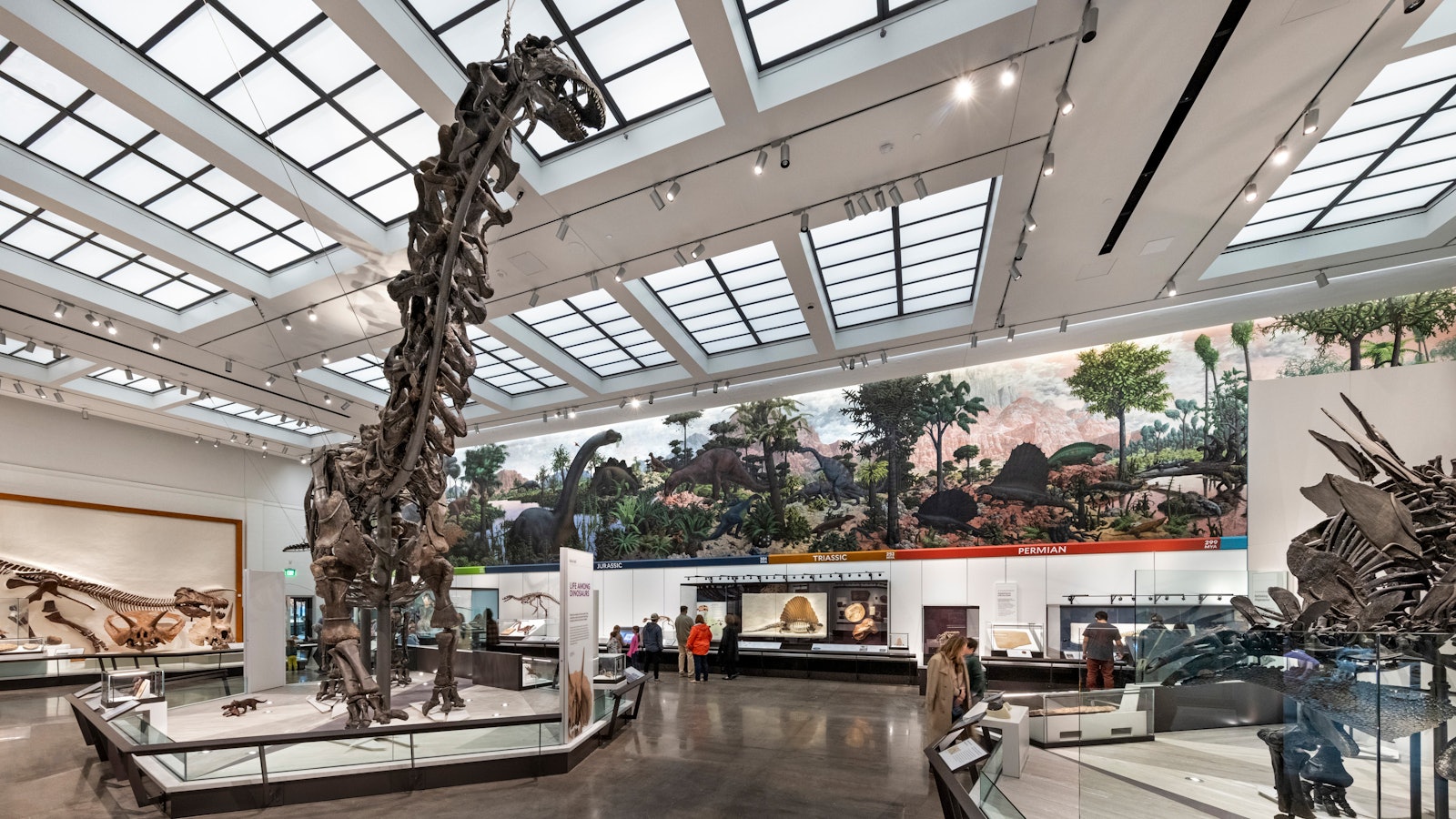Yale Peabody Museum
Centerbrook designed comprehensive renovations and additions to Yale University’s Peabody Museum that transformed the institution with the first major changes since it opened in 1925. The Museum offers, for the first time, free admission.
Based on over 10 years of master planning, the large Peabody Museum expansion and renovation project fulfilled these goals:
- Increase Yale student engagement with the Peabody
- Increase collections-based teaching and research
- Improve wayfinding and efficiency, adding a Central Gallery
- Increase exhibit space, dynamism, and programming potential
- Increase main campus collection capacity and improve access
- Enhance K-12 learning and logistics
- Relocate and improve the loading dock for better service
- Advance sustainability
- Maintain the Peabody character
Yale University
Large fossils were remounted in dynamic poses beneath Rudolph Zallinger’s renowned murals, The Age of Reptiles and The Age of Mammals. Anthropological exhibits were greatly increased with a new floor of galleries. Other natural history exhibits were refurbished while historic dioramas were restored in place and relit. All the exhibits include cutting edge digitally interactive information modes.
Lower floor collections were greatly improved with state-of-the-art climactic control, research and restoration labs, and storage systems. With museum planning and exhibit design experts and the Peabody’s collections managers, Centerbrook revisioned the collections, looking at anticipated growth, phasing their rehousing, and improving secure storage. A new lower level learning center for K-12 students, conveniently near collections, introduces students to the museum’s materials and offerings.
These changes also support a new mission for the institution of engaging undergraduates with its materials, programs, and operations for experiential learning in all fields, including the liberal arts as well as sciences. The improvements include a bevy of new classrooms, labs, and learning spaces. A new north court and entry welcomes the Yale community for research and study, while the building’s iconic public entry remains, expanded, at the corner of Whitney Avenue and Sachem Street.


The project encompasses 172,355-square-feet between renovated spaces and new construction. The new construction primarily consists of a 57,631-square-foot, four-story infill addition between the Peabody and neighboring Environmental Science Center (ESC) on Science Hill. The addition features a new glass entrance tower that faces the adjacent Kline Geology Laboratory (KGL) and a dramatic sky lit four-story central gallery. The renovations also extend from the Peabody into neighboring ESC and KGL.
The reimagined Peabody employs advanced strategies to reduce its environmental footprint. Given its mission, addressing birds strikes was of utmost importance. Its exterior glass features closely spaced horizontal lines that helps birds perceive it as a physical barrier. With modern mechanical systems and an improved building envelope, the building is predicted to use significantly less energy, even with 57,000-square feet of new space. Other key strategies include improving indoor environmental quality, reducing waste in both its construction and operation, consuming less water indoors and outdoors, and mitigating stormwater runoff in its landscape.

Centerbrook and its large team of consultants – including ARUP, Cline Bettridge Bernstein, Gilsanz Murray Steficek, James Corner Field Operations, Langan Engineering and Reich+Petch – worked closely with Yale and Peabody administrators and museum staff to complete exhibit installation.
Founded in 1866, the Peabody is one of the oldest and most important scientific institutions in the nation. More than 130,000 visitors a year tour the exhibits and attend educational programs at the Peabody, which is Yale’s primary conduit for sharing scientific knowledge with the general public. It has been the home of major discoveries and advances for over 150 years. These improvements are planned to support similar scientific progress for the next century and more.
Designed by Charles Z. Klauder – a prominent campus architect of the era – the Peabody is a three-story French Gothic brick and dark brown sandstone building. Originally conceived in 1917, the project was delayed by U.S. involvement in World War I and construction commenced in the spring of 1921.
The Peabody Museum follows other recent renovations of Yale’s cultural icons, including the Center for British Art and the Beinecke Rare Book & Manuscript Library.
More Information
Press
We're using cookies to deliver you the best user experience. Learn More












